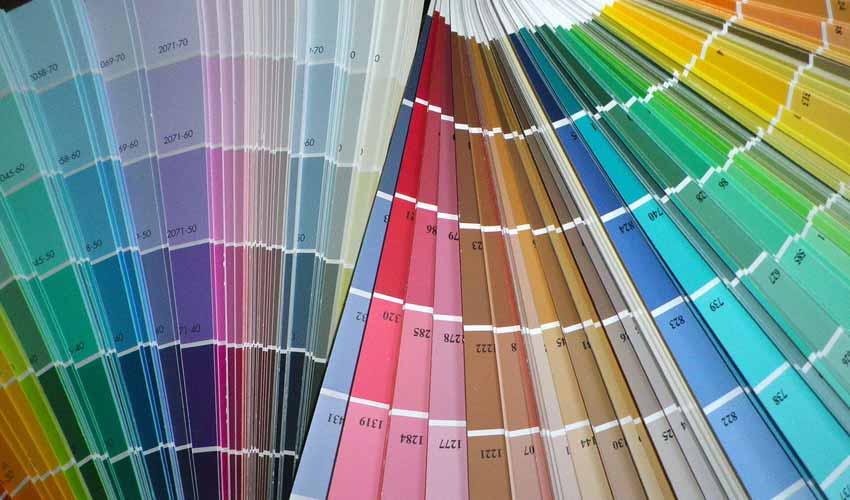Choosing Paint Colors Is Challenging

Recently I was asked for tips to help homeowners navigate the ocean of paint swatches at the home improvement store. Selecting colors can be challenging. It can be a daunting task. With so many colors to choose from it seems it would be easy to find just the right one.
The fact there are millions of colors in the world with very subtle differences in hues actually makes the task of selecting among them harder. With so many paint color choices, but with a hundred times more color possibilities, it often feels like the perfect color lies somewhere between one color sample and the next. For greys and beiges, this is particularly true. And just yesterday, a client of mine said she had gotten large paint samples of all 26 tones of white a particular paint company offers. How hard is her decision going to be?
Here are Some Tips to Help with Choosing Paint Colors
1. Find Something to Match
Sometimes it is easier to pick a paint color when you are not standing in front of many, many color choices. So instead of starting your search while standing in front of the rack of a zillion colors, start by finding an object, such as a throw pillow, a dress, some curtains, or similar that has the color you love. Take that object to the home improvement store and find the color that matches. Automatically, this will narrow your choices and make the selection easier.
2. Follow Your First Reaction
Take note of which paint colors are your “first blush” choices. Often, the colors that catch your eye initially will end up being your best and final choice. Spending too long pondering your decision can lead to you questioning your own judgment.
3. Try It Out at Home
Don’t make your final decision in the store. Take a strip of color samples (or several strips) that might be candidates home to evaluate there. This way you will see the colors in the context of your home and under the lighting conditions in your home.
4. Look at the Deeper Version of the Color
If you are choosing light colors, especially off-whites, look at the deeper colors, the paint colors with more color saturation, on the color strip that belong with the off-white color. This will show you the underlying tint of the off-white. Who hasn’t chosen a white paint color only to see it turn pink, or yellow, or greenish when the whole wall or room is painted with it. This is because the reflected light from one wall to the next will intensify the underlying tint or hue. By looking at the deeper versions of the off- white, you can more easily see the faint tones that are in it.
5. Eliminate the White Border
Cut the paint sample strip or fold it so that you can see only the paint color itself and none of the white backer card. Because our eyes gauge contrast, the bright white of the backer card will distort your perception of the actual paint color. You’ll get a better read on the true color without the influence of the white card.
6. Do a Small “Brush Out”
Finally, buy a small can of the paint color you choose, or a small can of a couple of possible colors. Then paint out a sample area (a brush out) of about two or three feet square on the wall at home. This small cost of the can of paint will be a worthwhile investment to get the color right before you spend a good deal of money on all the paint for the entire project, not to mention the time wasted if you have to repaint the room to correct a mistake.
Ultimately, It Might Be Worth the Cost of a Few Hours of Consultation with a Good Interior Designer.
One advantage an interior designer can have is they have used many of these colors on many projects. They have learned which colors they can “trust.” An experienced interior designer will have a dependable palette of colors they have used many times that won’t take on the wrong hue once the paint is on the wall and they will get the expected results. They will also know which colors can turn funky when painted in large areas.
Doing these things I suggest might take a bit more time than simply picking a paint color while standing in the store. But it will be worth it when the colors work out just as you had envisioned.
I hope this information is helpful to you. You might want to get yourself a copy of my best-seller, Designing Your Perfect House. It is chockfull of valuable tips and advice that will save you many times the cost of the book on your house building or remodeling project. You might also like The Well-Centered Home: Simple Steps to Increase Mindfulness, Self-Awareness, and Happiness Where You Live. It will show you how to make your home a happy place.

